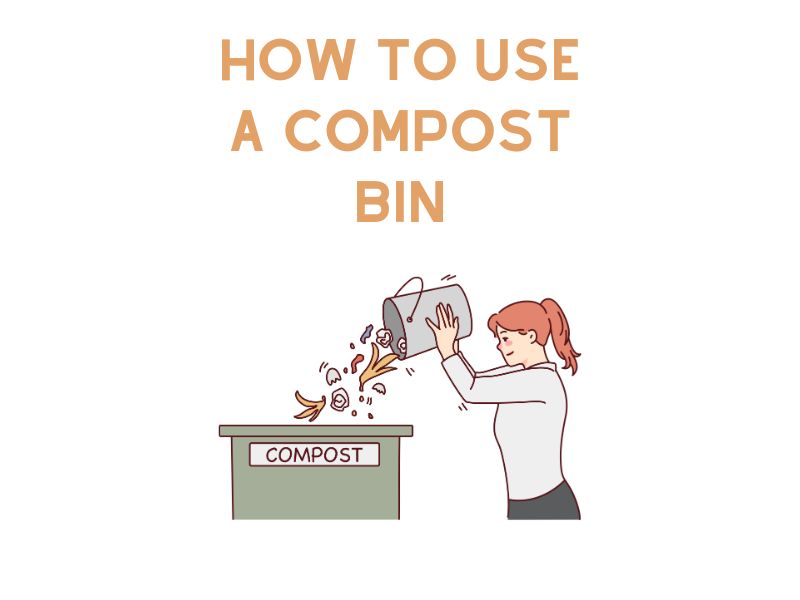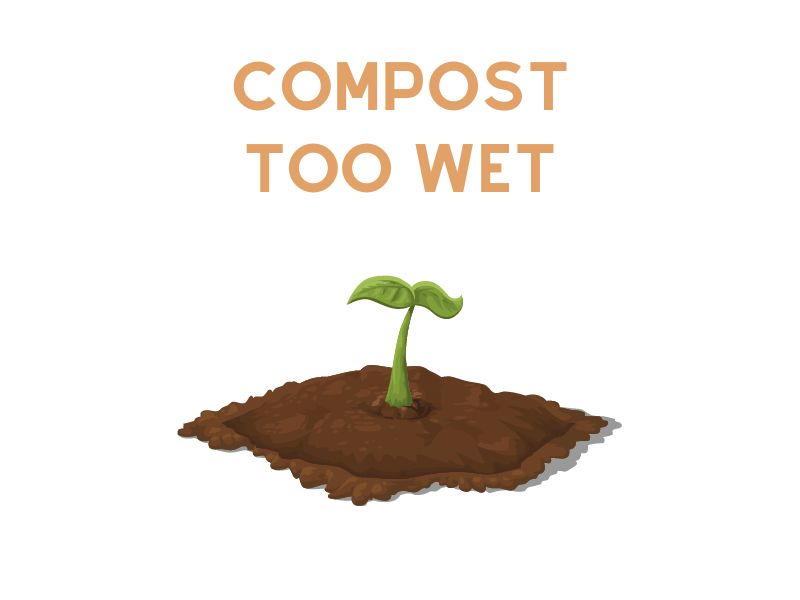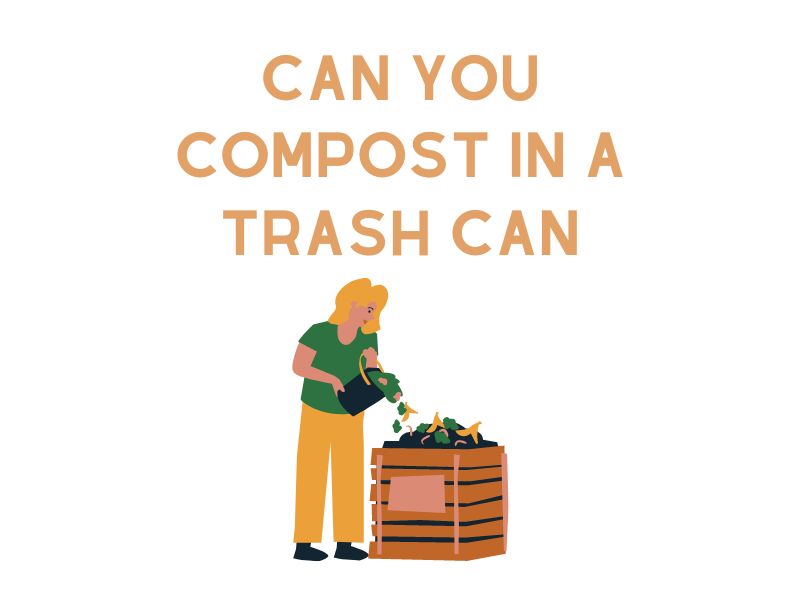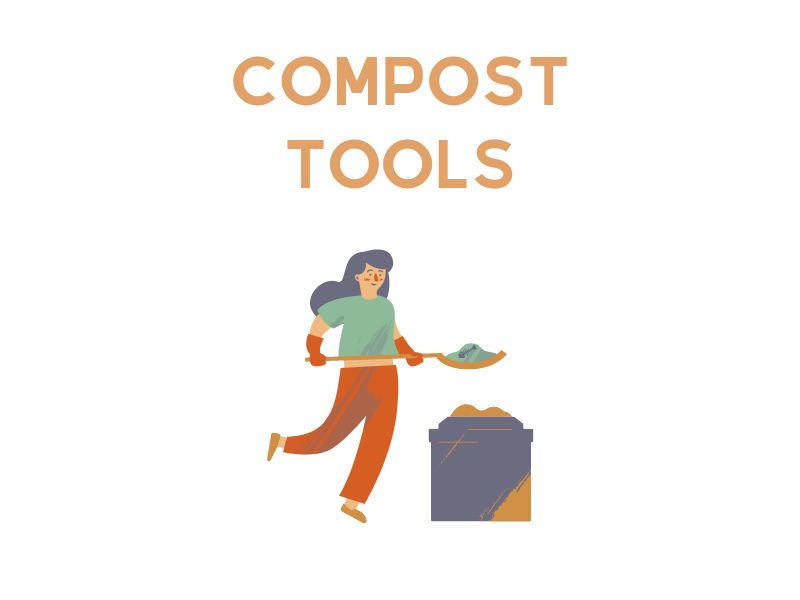Composting is a transformative process that breathes new life into organic waste, turning it into a valuable resource for your garden. This eco-friendly practice reduces the amount of waste that ends up in landfills and enriches your garden soil, creating a healthier environment for plants to thrive. This guide will take you on a journey through the world of composting, providing you with the knowledge and tools to effectively use a compost bin.
Composting Demystified: Understanding the Science
Composting is a fascinating natural process where organic waste decomposes under specific conditions. There are two main types of composting: aerobic and anaerobic.
Aerobic Composting
Aerobic composting is the most common method used in home composting. This process requires oxygen and is facilitated by a variety of microorganisms, including bacteria, fungi, and other decomposers, that break down the organic material into nutrient-rich compost. The key elements of aerobic composting include:
- Oxygen: Oxygen is essential for the survival and activity of aerobic microorganisms. Turning your compost pile regularly can help ensure that oxygen is evenly distributed throughout the pile.
- Moisture: Microorganisms need water to survive. Your compost pile should be as damp as a wrung-out sponge to provide an ideal environment for these organisms.
- Temperature: As microorganisms break down organic material, they generate heat, which can speed up the composting process. A hot compost pile (between 130-160°F) can decompose materials faster and kill weed seeds and pathogens.
- Material Size: Smaller pieces of material decompose faster than larger pieces because they provide more surface area for microorganisms to work on.
Anaerobic Composting
Anaerobic composting, on the other hand, occurs without oxygen. This process is typically slower and can produce a foul smell if not appropriately managed. However, it requires less work as it doesn’t need to be turned in regularly. Anaerobic composting is often used in large-scale composting facilities or in situations where composting materials are difficult to turn.
The Role of Microorganisms in Composting
Microorganisms are the unsung heroes of composting. They are responsible for breaking down the organic material in your compost bin. These tiny organisms consume the material, breaking it down into smaller pieces, and produce heat, which helps speed up the composting process. The main types of microorganisms involved in composting include:
- Bacteria: These are the most abundant microorganisms in the compost pile. They are the first to break down plant tissue and also help decompose proteins, fats, and complex carbohydrates.
- Actinomycetes: These organisms give compost its earthy smell. They break down many of the same materials as bacteria but are especially important for breaking down tougher materials like cellulose and lignin in woody plant tissue.
- Fungi and Molds: These organisms break down the complex organic compounds in the compost pile, including cellulose and lignin.
- Protozoa and Rotifers: These microorganisms help control the population of bacteria and other microbes in the compost pile by consuming them.
Selecting Your Composting Ally: Choosing the Right Compost Bin
Choosing a compost bin is a crucial step in your composting journey. The size, material, and design of the bin are all important factors to consider. There are a variety of compost bins available, each with its unique features and benefits. From tumblers that are easy to turn, to stationary bins that can hold large volumes of compost, to worm bins that bring the power of vermicomposting to your home, there’s a compost bin for every need and preference.
The Composting Menu: What Can and Can’t Go in Your Compost Bin
Knowing what to compost and what to avoid is key to maintaining a healthy compost pile. Compostable materials are divided into “greens” and “browns.” Greens, rich in nitrogen, include materials like vegetable scraps, coffee grounds, and fresh grass clippings. Browns, rich in carbon, include items like dried leaves, straw, and paper. However, not all organic materials are compost-friendly. Meat, dairy, and diseased plants should be avoided as they can attract pests and produce unpleasant odors.
Laying the Foundation: Setting Up Your Compost Bin
Setting up your compost bin involves choosing a suitable location, preparing the bin, and adding your compost materials. The bin should be placed on a level, well-drained area. Start your compost pile with a layer of browns, followed by a layer of greens. Add water to maintain moisture, but avoid making the pile too wet, as this can lead to a smelly compost pile.
Best Practices for Using a Compost Bin
Using a compost bin effectively involves maintaining a balance of materials, turning the compost regularly, and managing moisture levels. Avoid overloading your compost bin and chop larger waste into smaller pieces to facilitate faster decomposition.
Where to Place Your Compost Bin
The placement of your compost bin can significantly influence the composting process. The bin should be in a location that’s easily accessible, has good drainage, and receives a balance of sun and shade. In colder climates, placing the bin in a sunny spot can help maintain the heat needed for composting.
Compost Care: Maintaining Your Compost Bin
Maintaining your compost bin involves regular turning, monitoring temperature and moisture levels, and troubleshooting any issues. Regular turning helps to speed up the decomposition process and prevent unpleasant odors. It also helps to distribute the heat generated by the composting process, which can kill weed seeds and disease-causing organisms.
Solving Composting Conundrums: Troubleshooting Common Issues
Common composting problems include pests, foul odors, and slow decomposition. Pests can be deterred by avoiding the addition of meat and dairy products to your compost bin and by maintaining a good balance of greens and browns. Foul odors can be a sign of too much moisture or a lack of oxygen, which can be remedied by adding more browns and turning the compost pile more frequently.
Harvesting and Using Your Compost
The moment of truth in composting is when your compost is ready to be harvested. Finished compost is dark, crumbly, and has an earthy smell. It should be neither too wet nor too dry. To harvest, remove the finished compost from the bottom of your bin, leaving the unfinished compost to continue decomposing.
The Many Uses of Compost: Enriching Your Garden
Compost is a versatile material that can be used in many ways in your garden. It can be mixed into garden soil to improve its fertility and structure, used as a mulch to help retain soil moisture and suppress weeds, or made into compost tea, a nutrient-rich liquid fertilizer for plants.
The Composting Code: Tips for Success
Successful composting requires a bit of knowledge and effort. Here are some tips to help you along the way:
- Chop materials into smaller pieces to speed up composting.
- Maintain a balance between greens and browns.
- Turn the compost regularly to aerate the pile and speed up decomposition.
- Keep the compost moist but not soggy.
- Avoid composting meat or dairy to prevent pests and odors.
The Composting Palette: Greens and Browns
Understanding the difference between “greens” and “browns” is key to successful composting. Here’s a table to help you identify common examples of each:
| Greens (Nitrogen-Rich) | Browns (Carbon-Rich) |
|---|---|
| Vegetable scraps | Dried leaves |
| Coffee grounds | Straw |
| Fresh grass clippings | Paper |
| Fruit peels | Cardboard |
| Tea bags | Pine needles |
FAQ About Using Composting Bin
Can I compost cooked food?
It’s best to avoid composting cooked food as it can attract pests. However, some cooked foods without oil or animal products can be composted.
Why is my compost pile smelly?
A compost pile might smell if it’s too wet or contains too many greens. Add more browns and turn the pile to add oxygen.
How long does it take for compost to be ready?
The composting process can take anywhere from 2 months to 2 years, depending on the materials used and how often the pile is turned.
Conclusion: The Joy of Composting
Composting is a rewarding practice that benefits both your garden and the environment. By understanding the process and maintaining your compost bin properly, you can create nutrient-rich compost for your plants. Keep composting and contribute to a greener planet!





